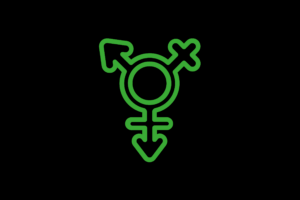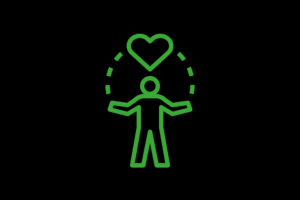The double empathy problem is a theory that explains the difficulties autistic people face when socialising with non-autistic people.
It’s sometimes said that all autistic people are socially awkward and lack empathy, but this isn’t true. The double empathy problem suggests it’s difficult for autistic people to understand non-autistic people AND for non-autistic people to understand (or empathise with) autistic people. This makes sense because autism isn’t a disorder, it’s just the way one type of brain works – the same way that being non-autistic isn’t a disorder.
Lots of autistic people are extremely empathetic, but this empathy often isn’t recognised by non-autistic people. We tend to use language, tone of voice, and body language differently to non-autistic people, but this doesn’t mean our way of communicating is “wrong,” “bad,” or “disordered” – it’s equally right and good. Problems happen when people with very different communication styles interact without an understanding of each other.
Non-autistic people might:
- Struggle to understand autism and autistic people
- Not empathise with autistic sensory differences
- Wrongly believe negative myths and rumours about autism and autistic people
- Expect unnecessary things like eye contact (which can be hard for some autistic people)
- Find it easier to socialise with other non-autistic people
Autistic people might:
- Struggle to read non-autistic social cues (especially unspoken ones)
- Need to manage sensory differences while socialising
- Find it easier to socialise with other autistic people.
Because it’s more common to be non-autistic, there’s a lot of pressure for autistic people to automatically understand non-autistic people instead of both sides working to understand each other. Autistic people are usually expected to mask and sacrifice needs in order to fit in – but that isn’t fair. Something being rarer doesn’t make it less okay – just like having green eyes doesn’t mean they aren’t as good as blue or brown eyes.
When communication is difficult, it’s usually because people have understood something differently. The best way to deal with that is for everybody to do their best to understand and empathise with each other’s experiences and feelings – not for one person to change in order to fit the others. It shouldn’t be autistic people’s job to change ourselves to fit in – it’s everybody’s job to listen to each other and try to find ways to communicate and socialise that don’t hurt anyone.
That could mean removing expectations for eye contact, choosing somewhere less overwhelming to hang out, avoiding upsetting jokes, doing different activities together, or something else! If things are difficult between you and a non-autistic friend, there might be ways you can both understand and support each other better – it’s good to talk about how you feel to work out the best way forward.
The most important thing to remember is that your differences are not a bad thing, and they’re certainly not your “fault”. It’s good that people are different from each other, because it can help us understand the world from lots of perspectives when we work together to communicate.



